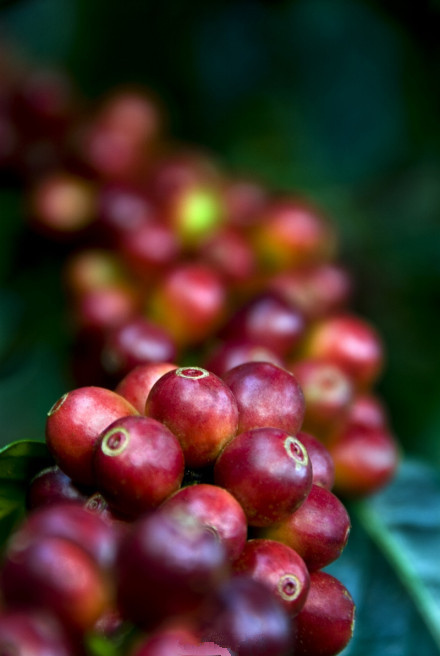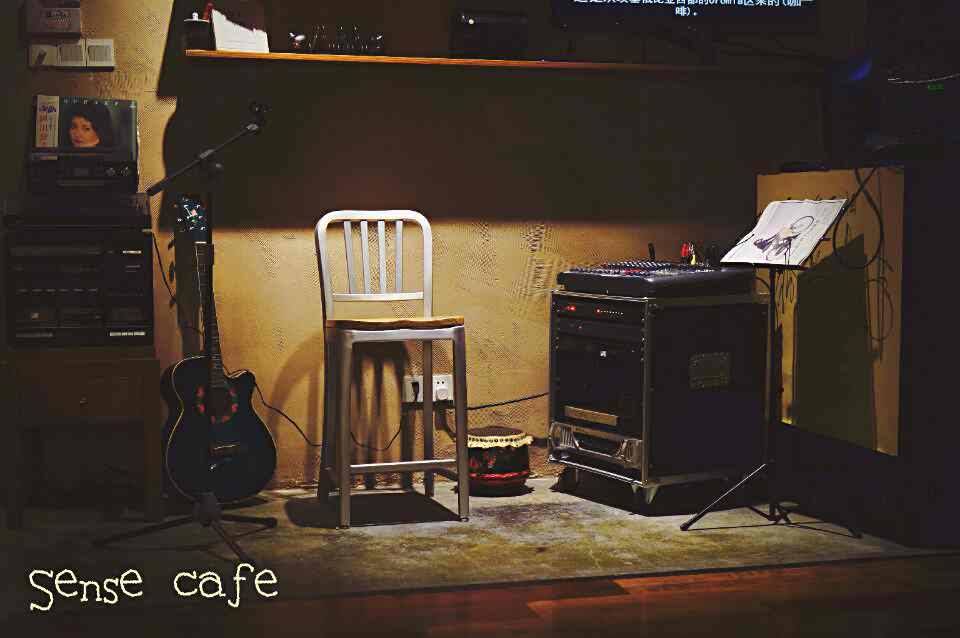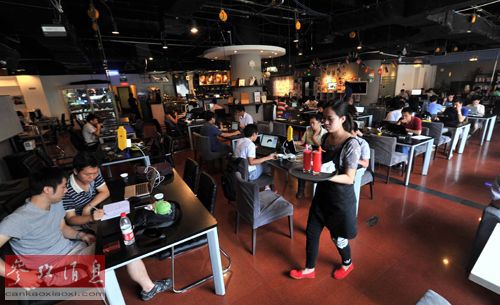Coffee crisis with tricky tastes and fragile varieties

The price of coffee is forecast to rise by 25% by 2050.
The livelihoods of 25 million people may depend on whether scientists can find a way to protect fragile coffee plants and berries.
A whole year's coffee harvest may depend on the florescence of just a few days, when plants are particularly vulnerable to extreme weather.
Last year, coffee leaf rust caused catastrophic damage to coffee farms in Nicaragua, perhaps heralding the coming crisis.
Droughts, floods, disease-climate change has threatened global coffee production. It is predicted that by 2050, the area of land suitable for growing coffee in Africa will be reduced by as much as 50%. How will the world respond? Will coffee become a luxury that only a few people can consume?
As we drink coffee and read the news in the newspapers, climate change seems to be a very distant threat. But when you come to a coffee producing area thousands of miles away, you will find that the crisis is just around the corner.
A coffee farmer in the Mexican state of Chiapas recently talked about drastic climate change in an interview with Alicia Frank, a researcher at the University of California. In the past, there was usually only mild drizzle, but now there are frequent torrential rains, causing coffee trees to flood. "when we were kids, Rain Water didn't have as many as he does now," one interviewee told Frank. "Coffee production was reduced as a result. Too much Rain Water causes leaves and fruits to fall. "
Once stable, mild weather, now become cloudy and sunny, the temperature fluctuates sharply, too cold will affect plant growth, and too hot will cause the fruit to dry up before ripening. In addition, there are hurricanes and landslides, which sometimes inundate entire farms. A farmer said, "this climate is so strange." Strange phenomena that we have never seen before are happening. "
These problems are by no means confined to Mexico. In South America, Asia and Africa, droughts, torrential rains and pests caused by global warming are causing coffee plants to wither and reduce production.
The consequences of this disaster will soon be reflected in the coffee shop near your home. At present, the world drinks 2 billion cups of coffee every day. When coffee trees are abused by extreme weather, how can we ensure that we continue to enjoy this delicious drink? If coffee farmers cannot meet the market demand, we will soon have a "coffee peak" (peakcoffee).
Some people worry that our efforts to address these challenges will only lead to more environmental disasters. Others believe that the only solution is to change the drink itself. Whatever the answer is, enjoy your coffee while you can: soon humans may say goodbye to the coffee they are familiar with.
Tricky taste and fragile varieties
Part of the problem is that human tastes have become more refined. At present, there are two main types of commercial coffee in the world: C of-fee A rabica, which is more fragrant, and C offee R obusta, which is bitter. Thanks to its complex taste, Arabica is more popular, accounting for about 70% of total coffee consumption.
However, the pursuit of exquisite taste is not without price: Arabica is more sensitive to stress than his stronger relative, Robusta. Almost all commercial Arabica coffee plants come from a coffee tree grown in the mountains of Ethiopia, which limits its genetic diversity and makes it particularly vulnerable to climate change. The optimal growth temperature of this plant is between 18 and 22 degrees Celsius, which requires regular gentle Rain Water watering and is very demanding. "it needs a very special climate and can only find an environment suitable for them to grow in a few places around the world," said Christian Boone of Humboldt University in Germany. This makes it very different from other crops, such as cotton, which has been cultivated for thousands of years, can adapt to very different climatic conditions.
Fragile Arabica coffee is simply unable to cope with the unpredictable conditions brought about by climate change. In Mexico, for example, rising temperatures seem to bring more rain, and a torrential rain may make it too late for plants to seed. "the flowering period of coffee plants is only 48 hours, and if there is an accident during flowering, such as a sudden rainstorm, then this season's harvest will be lost," said Einhoa Magrach of the Institute of Terrestrial ecosystems at the Federal Institute of Technology in Zurich.
Elsewhere, the opposite is true: drought. Coffee farmers in Uganda's Ruwenzori Mountains told the charity Oxfam that the local climate is getting hotter and drier, causing flowers to fall before they bear fruit. Even if the result is successful, the coffee beans will be dry and small. To make matters worse, the natural enemies of coffee plants are more adaptable to hot climates, including leaf miner, coffee pulp borer, pink scale and leaf rust. In the 2013 leaf rust disaster, coffee production in central America fell by 20%. As global warming intensifies, such events are likely to become more frequent.
Calculating the long-term cost is not straightforward enough-it is difficult to distinguish between independent events and broad trends-after analyzing coffee production in Tanzania since the 1960s, a team found that the crop once produced as much as 500kg per hectare, compared with just over 300kg per hectare today. More importantly, the decline in production seems to be related to temperatures rising at a rate of 0. 3 degrees Celsius every 10 years. 3 degrees Celsius, and the reduction in rainfall caused by warming is closely related.
All this pieced together a bleak future. Using the latest global climate change data, Boone's calculations show that by 2050, land suitable for Arabica coffee will be reduced by as much as 50%. Traditional coffee-growing areas, such as Vietnam, India and Central America, will be particularly hard hit.
The rising price of coffee and the environmental cost
These consequences will be serious for coffee growers and enthusiasts alike. First of all, it can be predicted that coffee will become an almost luxury commodity. According to Boone's prediction in his doctoral thesis, the price of coffee could rise by about 25% by 2050. As technology advances and yields continue to increase, other crops become cheaper and cheaper, and this price increase will be particularly prominent. So, if you take this into account, the price of coffee has actually risen by more than 50%.
In this case, it will be very difficult for coffee farmers to make a profit. After years of struggle, many of them may choose to grow crops with more stable yields. "when we asked coffee farmers with our calculations, everyone told us that this was true-in the low elevations of Central America, most people have given up growing coffee," Boone said. "everyone is starting to switch to rubber."
Given the huge benefits, there are bound to be people who will find ways to get coffee in short supply-which may mean paying a huge environmental price. Magrach recently mapped areas suitable for Arabica coffee and compared them with ecological reserves. In a worst-case scenario, she found, we would need to cut down 2.2 million hectares-the size of Wales-to meet the expected demand. This will lead to serious loss of ecological diversity.
Of course, there may be other better solutions. Strong robusta coffee is clearly better able to cope with climate change; Margrah's model even shows that the number of areas suitable for robusta coffee will increase as temperatures rise. If so, a disaster can be avoided by simply adjusting the taste, but only if we learn to like the bitterness of the coffee. "it's obviously better for forest conservation," Magrach said. She hopes that in the future, food labels will indicate whether coffee beans are produced in ecologically fragile areas, or at least let consumers know the environmental cost of producing the can of coffee and make more responsible choices.
It is also hoped that improvements in planting techniques will maintain coffee production. The Coffee and Climate program is already helping more than a dozen coffee plantations to share information and study the best ways to deal with challenges. One option is to graft Arabica plants into Robusta's roots to produce a hybrid that is more drought-tolerant and maintains the fragrance that humans like. Another method is to help develop a new variety that combines the advantages of Robusta and Arabiya through selective breeding. "this is the direction of people's efforts, but we are not sure when we will be able to develop an ideal new breed," Margrah said. "
The livelihood of coffee farmers and other related practitioners-a total of at least 25 million people are estimated to be engaged in coffee-related occupations-depends on whether we can find the ideal answer as soon as possible. At present, coffee farmers face uncertain prospects every day. Although many farmers watch the weather forecast on TV every day and do everything possible to cope with the coming torrential rain, they still feel helpless, as if driven by forces beyond their control and do not know where they are going.
Some coffee farmers feel that this has almost become a taboo topic. "We rarely talk about climate change," one told Frank. "We already know it exists, but there's nothing we can do about it."
Important Notice :
前街咖啡 FrontStreet Coffee has moved to new addredd:
FrontStreet Coffee Address: 315,Donghua East Road,GuangZhou
Tel:020 38364473
- Prev

What kind of spark will be produced by "travel agency + coffee shop"?
What kind of spark will there be when drinking coffee while learning about travel information, travel agencies and cafes? Did our reporter Wang Fenglin ever think that one day when you came to a travel agency near the community, you found that you could not only learn about tourism products, but also drink coffee, party, play board games and watch movies? this is no longer an idea, but the travel agency began cross-border marketing with cafes. Recently
- Next

The hot Japanese media of "coffee shop entrepreneurship" in China say that due to the surge in venture capital
Japanese media reported on Sept. 8 that too much emphasis on the institutional shortcomings of large state-owned enterprises is one of the structural problems in China's economy. The government tries to solve this problem by promoting private entrepreneurship. In the university district of Beijing, there is a start-up street, which brings together a large number of entrepreneurs who are exploring and practicing Silicon Valley. According to Japan's Asahi Shimbun, September 6
Related
- What brand of black coffee is the most authentic and delicious? what are the characteristics of the flavor of the authentic Rose Summer Black Coffee?
- Introduction to the principle and characteristics of the correct use of mocha pot A detailed course of mocha pot brewing coffee is described in five steps.
- Which is better, decaf or regular coffee? how is decaf made?
- How much is a bag of four cat coffee?
- How about four Cat Coffee or Nestle Coffee? why is it a cheap scam?
- Which is better, Yunnan four Cats Coffee or Nestle Coffee? How about cat coffee? is it a fake scam? why is it so cheap?
- How about Cat Coffee? what grade is a hoax? which instant coffee tastes better, four Cat Coffee, Nestle Coffee or G7 coffee?
- Process flow chart of coffee making-Starbucks coffee making process what coffee tastes good at Starbucks
- The top ten best coffee beans in the world Rose summer coffee or Tanzanian coffee tastes good
- Yunnan four cat coffee is good to drink?_four cat coffee is a big brand? four cat blue mountain coffee is fake?

